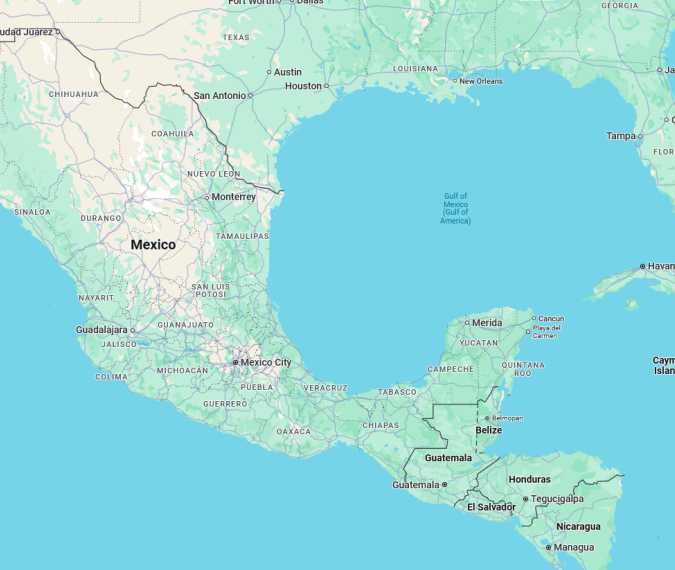
‘Gulf of America’ arrives on Google Maps
In a surprising move that has stirred national and international attention, the body of water formerly known as the Gulf of Mexico has been officially renamed the Gulf of America for U.S.-based users on Google Maps. This change, driven by an executive order from former U.S. President Donald Trump, reflects a broader political agenda emphasizing “American greatness.” The decision has sparked widespread debate, touching on issues of national identity, historical preservation, and the role of technology companies in reflecting governmental decisions. This article delves deep into the events leading to this change, its implications, and the reactions it has elicited across the globe.
The Gulf of Mexico Renamed to the Gulf of America
Renaming the Gulf of Mexico to the Gulf of America is not just a simple alteration of words on a map—it represents a significant shift in how geographical landmarks are perceived and politically branded. The executive order, signed shortly after Trump took office, mandates that U.S. government agencies and tech companies reflect this new designation in official documents, maps, and public notices.
According to Google’s statement, “People using Maps in the U.S. will see ‘Gulf of America,’ and people in Mexico will see ‘Gulf of Mexico.’ Everyone else will see both names.” This dual-naming approach aims to balance political directives with international recognition, but it has not been without controversy. Critics argue that such changes undermine historical context and diplomatic relationships, especially with neighboring Mexico.

The Gulf, a vital body of water for trade, tourism, and ecological diversity, has long been integral to North American geography. The name “Gulf of Mexico” reflects centuries of historical significance tied to Mexican heritage, exploration, and maritime history. Rebranding it as the “Gulf of America” has been perceived by many as an attempt to rewrite history through a nationalist lens.
Google Maps is pivotal in how millions perceive and interact daily with the world’s geography. The platform’s decision to adopt the new name highlights the complex relationship between technology companies and government mandates. Google stated that it has a “longstanding practice of applying name changes when they have been updated in official government sources,” emphasizing its commitment to reflecting authoritative data.
Interestingly, the name change is not universal. While U.S. users see “Gulf of America,” Mexican users continue to see “Gulf of Mexico,” and international users are presented with both names. This localization strategy aims to respect regional preferences while complying with governmental directives.
The precedent for such changes isn’t new. Tech companies often adjust map data based on geopolitical realities—for instance, the differing representations of Crimea depending on whether a user is accessing the map from Russia or Ukraine. However, the Gulf of America case stands out because it involves a name change driven more by political ideology than territorial disputes or international agreements.
The executive order responsible for the renaming was framed as part of a broader initiative to “honor American greatness.” Trump’s administration criticized President Obama’s decision to rename Mount McKinley to Denali, calling it “an affront to President McKinley’s life, achievements, and sacrifice.” Drawing parallels to historical figures, the order highlights President McKinley’s championing of tariffs and his tragic assassination, portraying him as a symbol of American resilience and success.
This order is part of a larger pattern during Trump’s presidency, where symbolic acts—such as renaming landmarks, altering immigration narratives, and reshaping historical commemorations—reinforce a particular vision of American identity. Supporters of the name change argue that it reclaims national pride, while detractors see it as an unnecessary politicization of geography.
The legal foundation for the order rests on the president’s authority to direct federal agencies in naming conventions for official U.S. documents and maps. While this authority is apparent domestically, it does not compel private companies or international bodies to adopt the changes, leading to a patchwork of naming practices worldwide.


